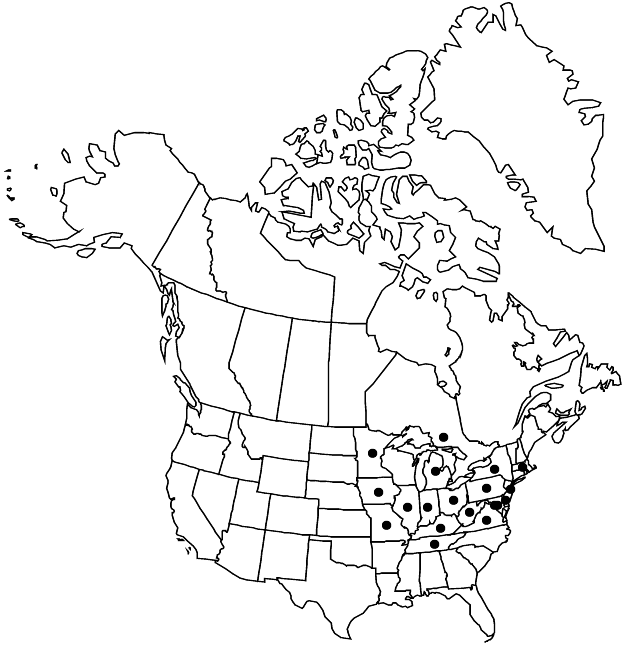Cerastium velutinum
Med. Repos., hexade 2, 5: 359. 1808.
Plants perennial, usually clumped, taproot present, sometimes with short rhizomes. Stems: flowering shoots ascending, often decumbent at base, branched, (15–)25–35(–40) cm, softly pubescent to subglabrous, hairs spreading, straight, concentrated in longitudinal lines toward base, glandular and eglandular; nonflowering leafy shoots often present, straggling, 5–15 cm; small axillary tufts of leaves present. Leaves sessile; cauline with largest at mid stem, smaller distally and proximally, blade narrowly oblong, linear-lanceolate to lanceolate or ovate, 20–45 × 3–11 mm, apex usually obtuse, softly ciliate-pubescent on both surfaces, more so on margins and abaxial midrib, rarely subglabrous, sometimes densely villose; proximal leaf blades often oblanceolate, apex ± obtuse. Inflorescences lax, 5–20-flowered cymes, pubescent, glandular, not viscid; bracts lanceolate, proximal foliaceous, distal smaller, with scarious margins, glandular-pubescent. Pedicels curved immediately below capsule, slender, 10–24 mm, ca. 2 times as long as sepals, pubescence spreading, glandular. Flowers: sepals lanceolate-elliptic, 5–8 mm, margins narrow, apex acute, densely and softly glandular-pubescent; petals obovate, 10–15 mm, 2 times as long as sepals, apex deeply 2-fid; stamens 10; anthers 0.9–1.1 mm; styles 5. Capsules cylindric, slightly curved, slender, 10–14 × 3–4 mm, 2–2.3 times as long as sepals; teeth 10, erect, margins convolute. Seeds brown, 0.8–1.2 mm diam., tuberculate; testa not inflated, tightly enclosing seed. 2n = 72.
Distribution

Ont., D.C., Del., Ill., Ind., Iowa, Ky., Mass., Md., Mich., Minn., Mo., N.J., N.Y., Ohio, Pa., Tenn., Va., W.Va.
Discussion
Varieties 2 (2 in the flora).
Until recently Cerastium velutinum has been included in C. arvense as a variety or subspecies. However, morphological characters and chromosome number (diploid in the native forms of C. arvense, tetraploid in C. velutinum) distinguish the two taxa. They are not interfertile. Crosses between them can be produced with difficulty but they are completely sterile. None are known to occur naturally.
An apparent hybrid between Cerastium velutinum and C. tometosum has been collected on the south shore of Lake Erie. It was completely sterile.
Selected References
None.
Key
| 1 | Cauline leaves narrowly oblong to linear-lanceolate or lanceolate, not overlapping to obscure stem, not marcescent, softly pubescent to subglabrous | Cerastium velutinum var. velutinum |
| 1 | Cauline leaves lanceolate to ovate, dense and overlapping, obscuring stem on sterile shoots, often marcescent, densely villous | Cerastium velutinum var. villosissimum |